Answered step by step
Verified Expert Solution
Question
1 Approved Answer
answer the questions which are given at the end of the case Ngugi wa Thiong'o DECOLONIZING THE MIND ex- I was born into a large
answer the questions which are given at the end of the case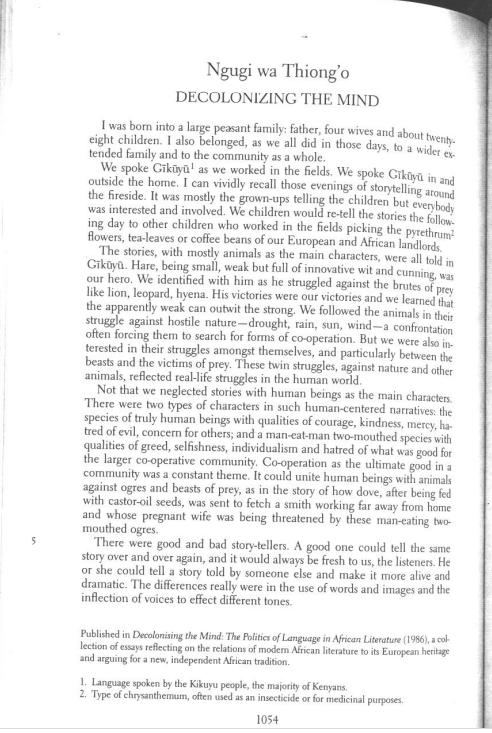
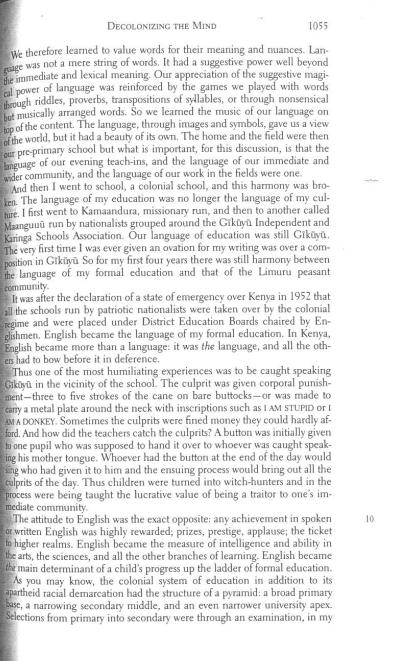
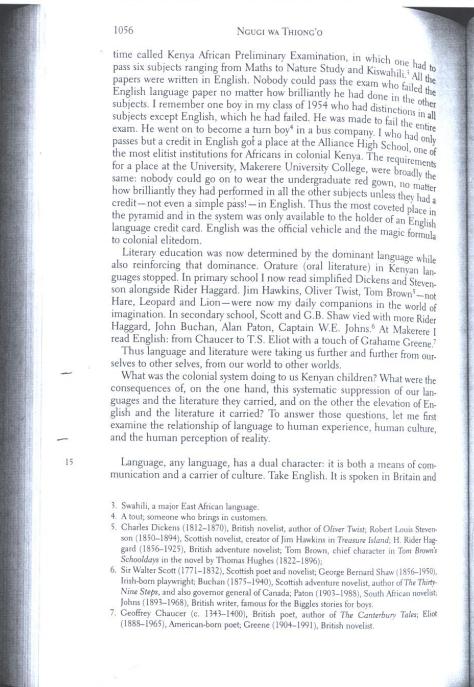
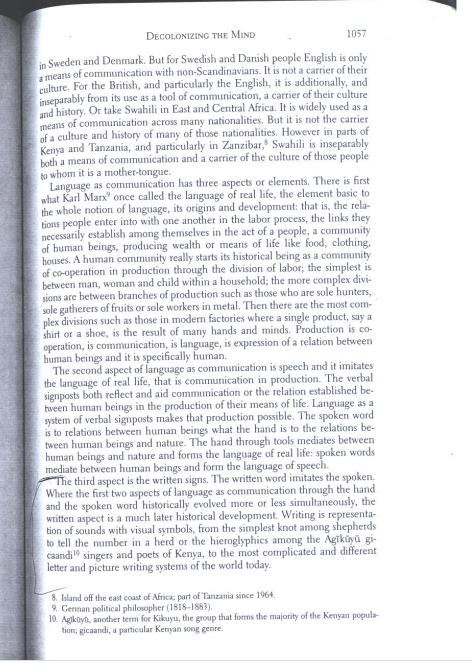
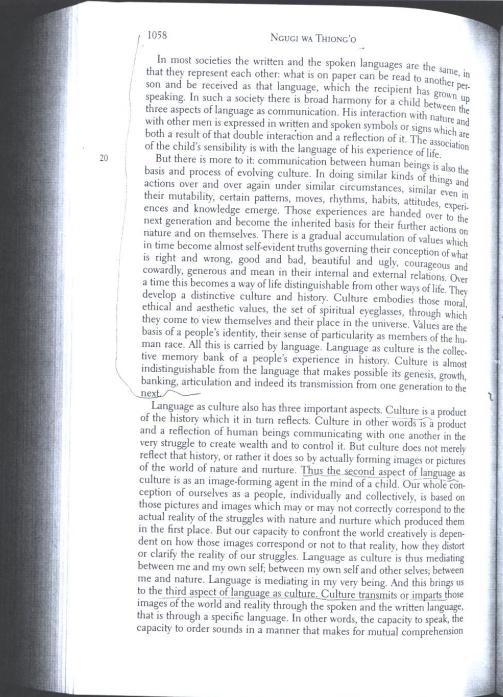
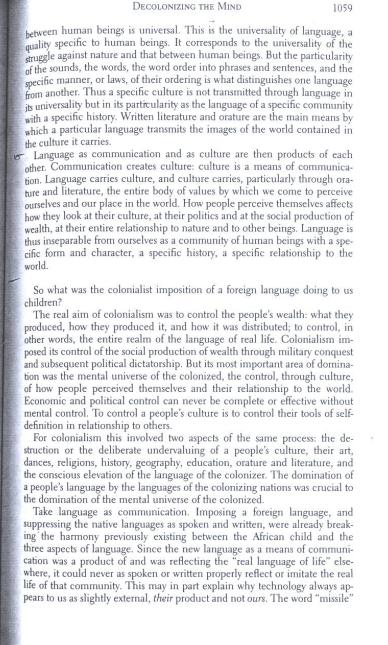

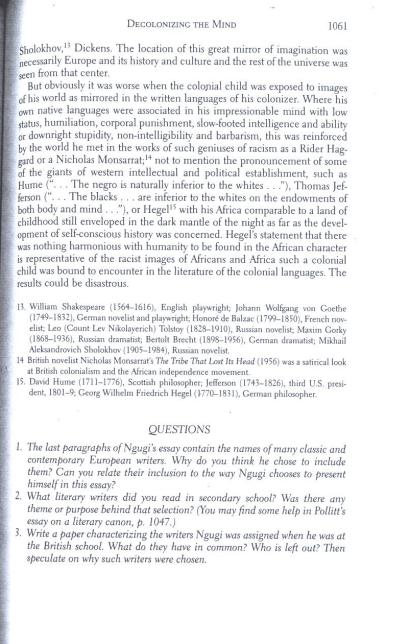
Ngugi wa Thiong'o DECOLONIZING THE MIND ex- I was born into a large peasant family: father, four wives and about twenty- eight children. I also belonged, as we all did in those days, to a wider e tended family and to the community as a whole. We spoke Gikuyu as we worked in the fields. We spoke Ciky in and outside the home. I can vividly recall those evenings of storytelling around the fireside. It was mostly the grown-ups telling the children but everybody was interested and involved. We children would re-tell the stories the follow- ing day to other children who worked in the fields picking the pyrethrum flowers, tea-leaves or coffee beans of our European and African landlords. The stories, with mostly animals as the main characters, were all told in Giky. Hare, being small, weak but full of innovative wit and cunning, was our hero. We identified with him as he struggled against the brutes of prey like lion, leopard, hyena. His victories were our victories and we learned that the apparently weak can outwit the strong. We followed the animals in their struggle against hostile nature-drought, rain, sun, wind-a confrontation often forcing them to search for forms of co-operation. But we were also in- terested in their struggles amongst themselves, and particularly between the beasts and the victims of prey. These twin struggles, against nature and other animals, reflected real-life struggles in the human world. Not that we neglected stories with human beings as the main characters. There were two types of characters in such human-centered narratives: the species of truly human beings with qualities of courage, kindness, mercy, ha- tred of evil, concern for others; and a man-eat-man two-mouthed species with qualities of greed, selfishness, individualism and hatred of what was good for the larger co-operative community. Co-operation as the ultimate good in a community was a constant theme. It could unite human beings with animals against ogres and beasts of prey, as in the story of how dove, after being fed with castor-oil seeds, was sent to fetch a smith working far away from home and whose pregnant wife was being threatened by these man-eating two- mouthed ogres. There were good and bad story-tellers. A good one could tell the same story over and over again, and it would always be fresh to us, the listeners. He or she could tell a story told by someone else and make it more alive and dramatic. The differences really were in the use of words and images and the inflection of voices to effect different tones. Published in Decolonising the Mind: The Politics of Language in African Literature (1986), a col- lection of essays reflecting on the relations of modem African literature to its European heritage and arguing for a new, independent African tradition. 1. Language spoken by the Kikuyu people, the majority of Kenyans. 2. Type of chrysanthemum, often used as an insecticide or for medicinal purposes. 1054
Step by Step Solution
★★★★★
3.52 Rating (162 Votes )
There are 3 Steps involved in it
Step: 1
1 Ngugi chose to include the classic and contemporary European writers in the last paragraphs of his essay in order to demonstrate the power of the colonizers narrative and its influence on the coloni...
Get Instant Access to Expert-Tailored Solutions
See step-by-step solutions with expert insights and AI powered tools for academic success
Step: 2

Step: 3

Ace Your Homework with AI
Get the answers you need in no time with our AI-driven, step-by-step assistance
Get Started


